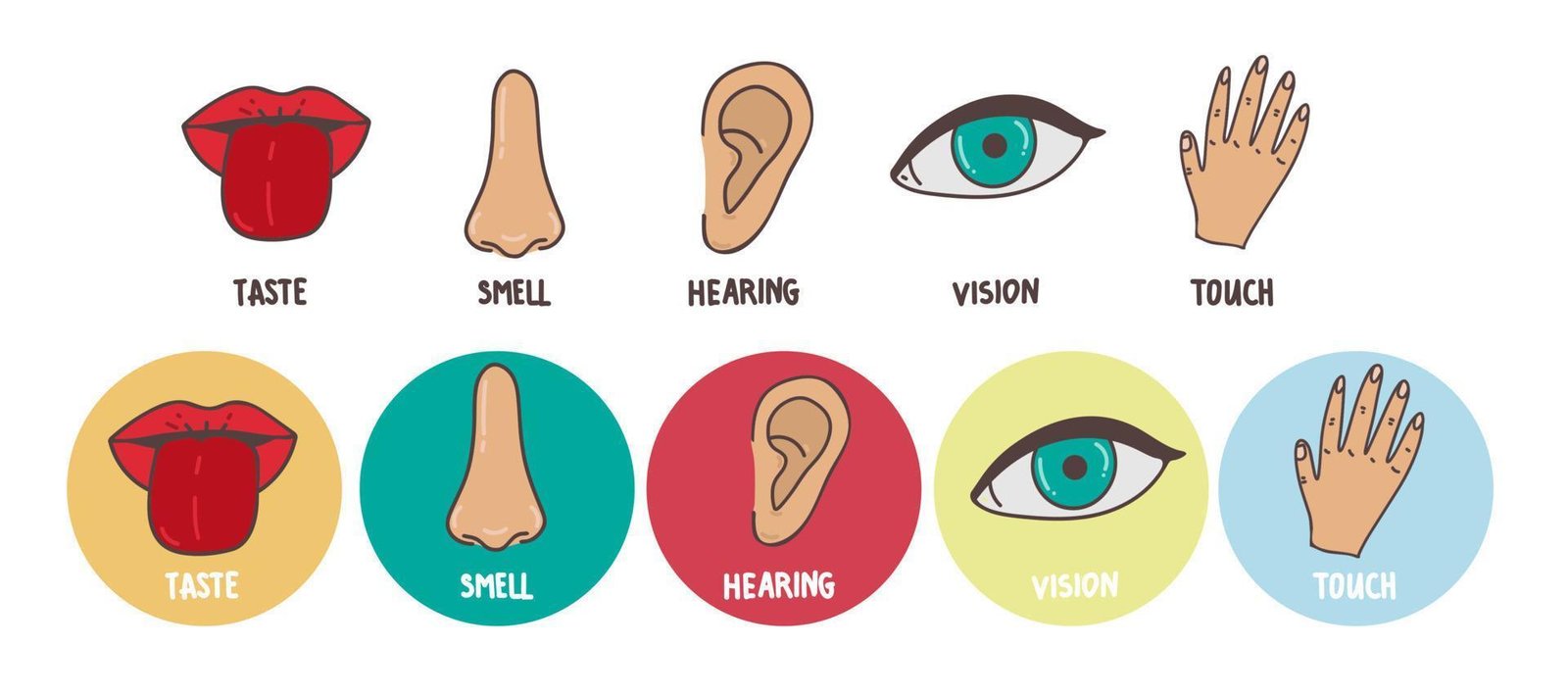Different types of sensory receptors-The course is designed for the basic understanding of anatomical structures and physiological functions of human body, musculoskeletal system, digestive system, respiratory system; cardiovascular system; urinary system, endocrine system, reproductive system, nervous system, hematologic system, sensory organs, integumentary system, and immune system.The aim of the course is to acquire knowledge and skills regarding anatomy and physiology.

Different types of sensory receptors
The somatic sensations of touch, pressure, vibration, warmth, cold, and pain arise from sensory receptors in the skin, subcutaneous layer, and mucous membranes
Types of Sensory Receptors
Both structural and functional characteristics of sensory receptors can be used to group them into different classes (Table 10.1). Structurally, the simplest are free nerve endings, which are bare dendrites that lack any structural specializations at their ends that can be seen under a light microscope.
| Basis of Classification | Description |
| Structure | |
| Free nerve endings | Bare dendrites are associated with pain, thermal, tickle, itch, and some touch sensations |
| Encapsulated nerve endings | Dendrites enclosed in a connective tissue capsule for pressure, vibration, and some touch sensations |
| Separate cells | Receptor cell synapses with first-order neuron; located in the retina of the eye (photoreceptors), inner ear (hair cells), and taste buds of the tongue (gustatory receptor cells). |
| Function | |
| Mechanoreceptors | Detect mechanical pressure; provide sensations of touch, pressure, vibration, proprioception, and hearing and equilibrium; also monitor stretching of blood vessels and internal organs. |
| Thermoreceptors | Detect changes in temperature |
| Nociceptors | Respond to painful stimuli resulting from physical or chemical damage to tissue. |
| Photoreceptors | Detect light that strikes the retina of the eye. |
| Chemoreceptors | Detect chemicals in mouth (taste), nose (smell), and body fluids. |
| Osmoreceptors | Sense the osmotic pressure of body fluids. |
Functionally sensory receptors are mentioned below

Mechanoreceptors: are sensitive to mechanical stimuli such as the deformation, stretching, or bending of cells. Mechanoreceptors provide sensations of touch, pressure, vibration, proprioception, and hearing and equilibrium. They also monitor the stretching of blood vessels and internal organs.
Thermoreceptors: detect changes in temperature. They are free nerve endings. Two distinct thermal sensations coldness and warmth are mediated by different receptors. Temperatures between 10 ^ C and 40 ^ c (50 – 105 ^ (op)) activate cold receptors, which are located in the epidermis. Warm receptors are located in the dermis and are activated by temperatures between 32 ^ C . and 48°C ( 90 deg -118^ F ).
Cold and warm receptors both adapt rapidly at the onset of a stimulus but continue to generate nerve impulses more slowly throughout a prolonged stimulus. Temperatures below 10 ^ C and above 48 ^ C stimulate mainly nociceptors, rather than thermoreceptors, producing painful sensations.

Nociceptors: respond to painful stimuli resulting from physical or chemical damage to tissue.
Photoreceptors: detect light that strikes the retina of the eye.
Chemoreceptors: detect chemicals in the mouth (taste), nose (smell), and body fluids.
Osmoreceptors: detect the osmotic pressure of body fluids
(Ref:- J. Tortora, 8th edition, P-299)
Read more:
